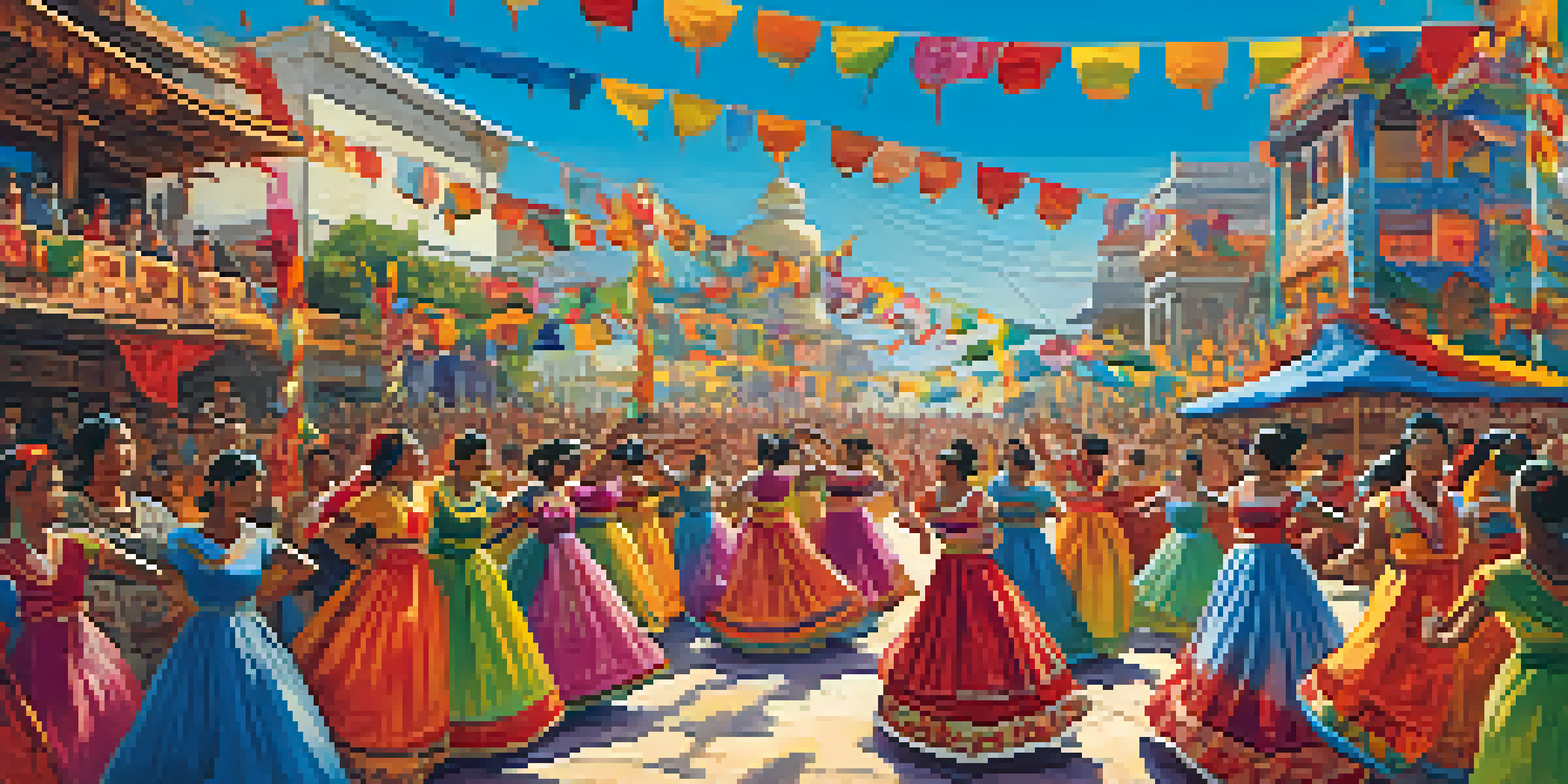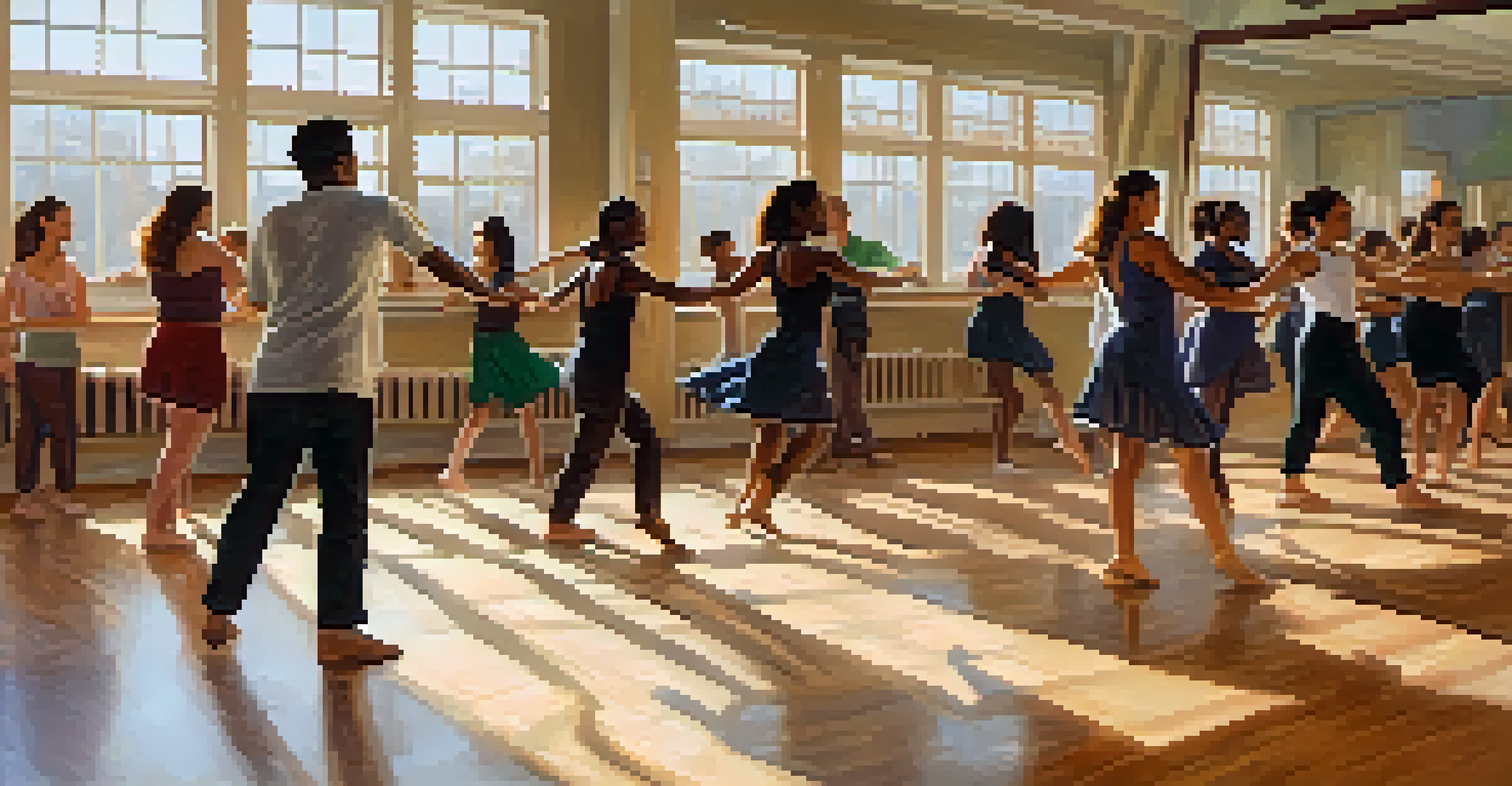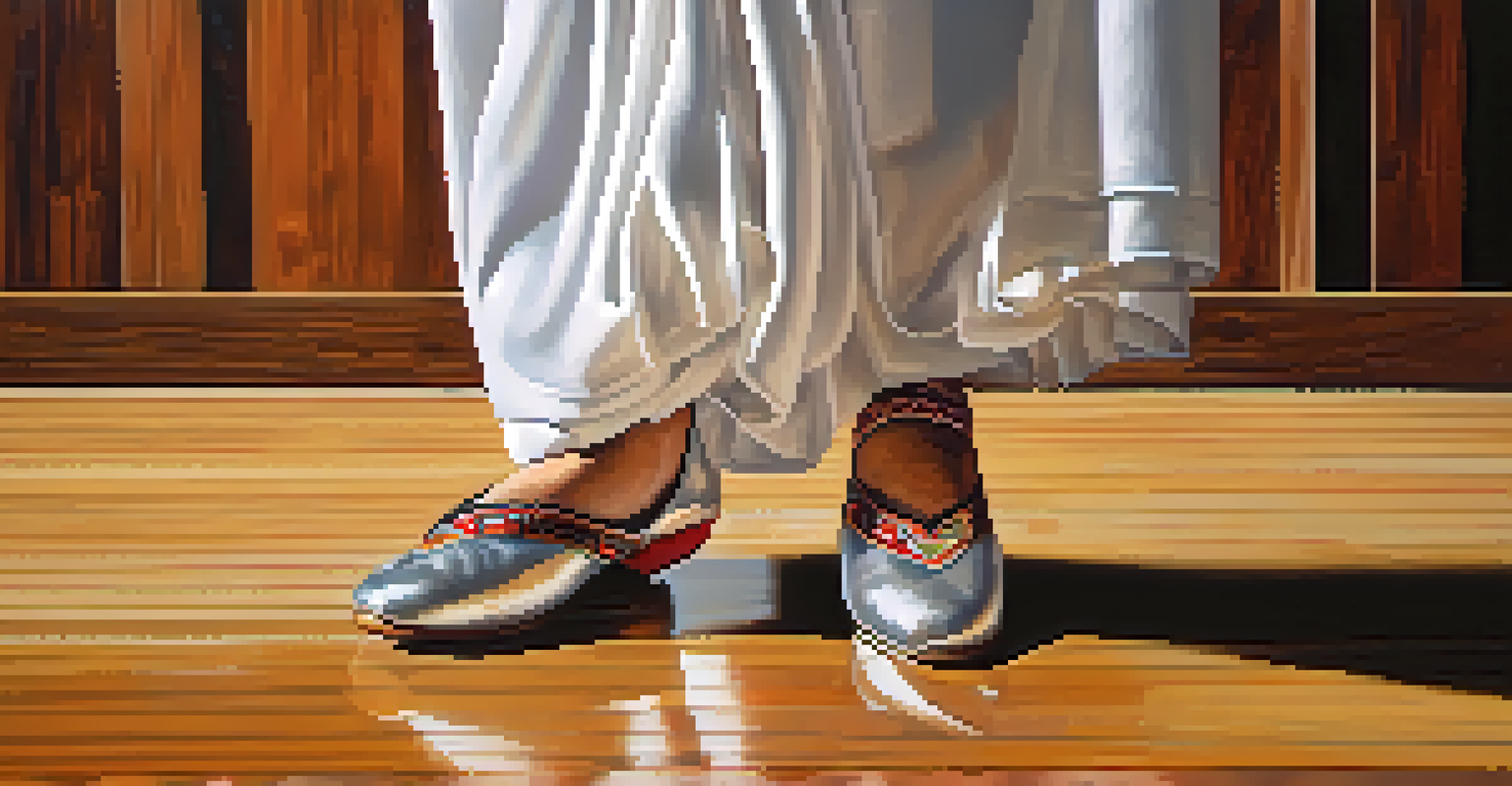The Impact of Globalization on Traditional Dance Forms

Understanding Globalization and Its Reach
Globalization is more than just an economic concept; it's a cultural phenomenon. It refers to the increasing interconnectedness of the world through trade, communication, and technology. As cultures blend, traditional practices—like dance—are influenced by outside forces, leading to both evolution and preservation challenges.
Culture is not a thing that exists in isolation; it is a river that flows and changes, carrying with it the influences of the world around it.
Imagine globalization as a vast ocean where cultural currents flow freely. Different societies share their dances, rhythms, and movements, creating a melting pot of styles. This exchange can enrich traditional dance forms, introducing new elements while also risking their authenticity and uniqueness.
Ultimately, globalization acts as both a bridge and a barrier for traditional dances. It can help them reach new audiences, yet also dilute their original meanings. Understanding this duality is crucial for appreciating the impact of globalization on dance.
The Role of Technology in Dance Globalization
Technology has revolutionized how we experience and share dance. Social media platforms allow dancers from different corners of the globe to connect, collaborate, and showcase their art. This virtual space fosters a sense of community, yet it also leads to the rapid spread of trends that may overshadow traditional practices.

Think of viral dance challenges on platforms like TikTok. These trends can spark interest in traditional dances but often come with a modern twist that might not reflect the original form. While this can introduce traditional dances to younger audiences, it raises the question of whether the essence of the dance is preserved.
Globalization Shapes Dance Traditions
Globalization fosters cultural exchange, enriching traditional dance forms while posing challenges to their authenticity.
The balance between embracing technology and maintaining authenticity is delicate. Dancers and cultural custodians must navigate this landscape carefully, ensuring that while they innovate, they also honor the roots of their art.
Cultural Exchange: A Double-Edged Sword
Cultural exchange can enrich traditional dance forms, allowing them to evolve while retaining their core identity. Dancers often incorporate elements from other cultures, enhancing their performances and expanding their repertoire. This blending can create vibrant new styles that resonate with diverse audiences.
Tradition is not the worship of ashes, but the preservation of fire.
However, this fusion can also lead to cultural appropriation, where elements of a dance are borrowed without proper understanding or respect. For instance, when a traditional dance is performed in a commercial setting without acknowledging its origins, it risks becoming a mere spectacle rather than a meaningful expression.
Navigating cultural exchange requires sensitivity and awareness. Dancers and choreographers must strive to honor the traditions they draw from, ensuring that their work reflects both innovation and respect.
Preservation Efforts in a Globalizing World
As globalization influences traditional dances, preservation efforts are more crucial than ever. Many communities are actively working to document and teach their traditional dances to ensure they are passed down through generations. Workshops, festivals, and educational programs serve as vital platforms for this knowledge sharing.
Consider the role of dance festivals around the world. These events celebrate cultural heritage by featuring traditional dances, providing a space for practitioners to gather and share their art. Such gatherings not only promote preservation but also encourage dialogue about the future of these art forms in a global context.
Technology Transforms Dance Sharing
Technology, especially social media, allows dancers to connect globally, but it can also overshadow traditional practices with modern trends.
Ultimately, preservation is not about resisting change but finding ways to integrate it thoughtfully. By fostering an environment where traditional dances can thrive alongside modern influences, communities can ensure their cultural legacies endure.
The Impact of Globalization on Dance Training
Globalization has transformed dance training, offering dancers access to diverse styles and techniques. Dance studios now often incorporate a variety of influences, allowing students to explore everything from ballet to hip-hop to traditional forms from around the world. This exposure can enhance a dancer's versatility and creativity.
However, this blending of styles can create a challenge for traditional dance instructors. They must navigate how to teach their art form while also acknowledging the myriad influences students encounter. The goal is to maintain the integrity of traditional techniques while fostering an appreciation for diversity.
In the end, dance training in a globalized world can be a rich experience. By embracing a range of styles, dancers can develop their unique voice while also honoring the traditions that shape their art.
Challenges Faced by Traditional Dance Communities
Traditional dance communities grapple with numerous challenges in a globalized world. As modern influences permeate their art, these communities often find themselves at a crossroads, needing to adapt while staying true to their roots. This tension can create internal conflicts about the future direction of their dance forms.
For many, globalization brings about a sense of urgency to preserve their heritage. As younger generations gravitate toward contemporary styles, traditional dances may struggle to maintain relevance. Communities must find innovative ways to engage youth, ensuring that these art forms remain vibrant and meaningful.
Preservation is Key for Future Dances
Efforts to document and teach traditional dances are crucial to ensure their survival in a rapidly changing cultural landscape.
Ultimately, the challenges faced by traditional dance communities highlight the importance of dialogue and collaboration. By working together and sharing their stories, they can navigate the complexities of globalization while fostering a deeper appreciation for their cultural heritage.
The Future of Traditional Dance in a Globalized Society
Looking ahead, the future of traditional dance in a globalized society is both promising and uncertain. As cultural boundaries continue to blur, traditional dance forms have the potential to evolve in ways that keep them relevant. This evolution can lead to exciting new interpretations that resonate with contemporary audiences.
However, the challenge lies in balancing innovation with preservation. Dancers and cultural leaders must work together to ensure that while they embrace new influences, they also honor the heritage that forms the foundation of their art. This delicate dance between tradition and modernity will define the future landscape of dance.

In conclusion, the journey of traditional dance in a globalized world will likely be one of adaptation and resilience. By embracing change while staying connected to their roots, communities can ensure that their dance forms continue to thrive in a dynamic cultural landscape.